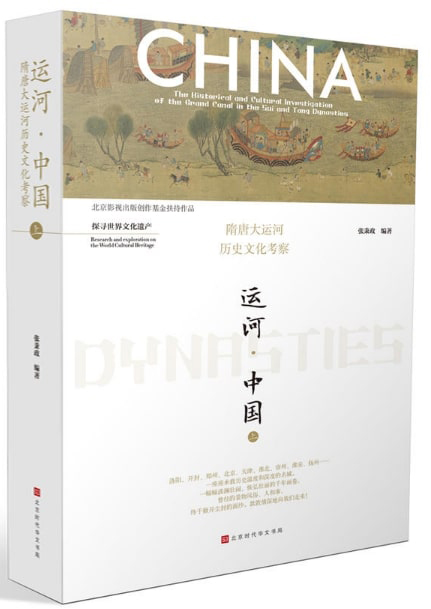Exploring historic culture of the Grand Canal

Historic Culture of the Grand Canal
The Grand Canal of the Sui and Tang dynasties spanned eight provinces and municipalities in China. It was the main artery of traffic between the north and south in ancient China, and was a great water conservancy project.
The Tongji Canal and the Yongji Canal of ancient times were two important sections of the Grand Canal. Historic Culture of the Grand Canal describes their origin and evolution. The book also dedicates a significant amount of content to introducing and exploring 20 cities along the two canals.
The author gathers historical facts from various documents and local chronicles. Readers can experience historical change and rich culture from reading the book. For example, in the first volume “Origin of the Grand Canal and Its Variant Names,” the author carries out serious research into the historical origins of the two canals, the evolution of their names, and the reasons for constructing the Grand Canal. In the third chapter of the second volume “Study on Unearthed Ceramics,” the author examines not only the source and type of the ceramics unearthed from the Grand Canal, but also the kiln, characteristics, functions and identification methods. These require a historian’s perspective, and knowledge of natural history, archaeology and art.
The book contains literary and historical values, and it connects geography with folklore, culture, transportation and trade. For example, in the first chapter of the second volume “Folk Culture along the Tongji Canal,” the author analyzes not only the characteristics of folk culture along the Tongji Canal, but also life customs, folk-customs involving production and exchange, rituals, beliefs, and cultural taboos. In the third volume “Travel Poems of the Grand Canal,” the author divides the evolution and development of travel poems into four stages: the rising stage in the Sui Dynasty, the prosperous stage in the Tang Dynasty, the pinnacle stage in the Song Dynasty, and finally the declining stage in the Yuan, Ming and Qing dynasties. The different themes and aesthetic values of each stage are evaluated in this book, utilizing a high level of literary and artistic knowledge.
This book also reveals the humanistic inspirations of the author. For example, in the second chapter of the second volume “Interviews on the Canal Folk Culture,” we can re-analyze traditional festivals such as the Lantern Festival, the Qingming Festival and the Mid-Autumn Festival through interviews contained within the book. In the fourth chapter of the same volume “Protection of the Grand Canal and Intangible Cultural Heritage,” through the comparison of tangible and intangible cultural heritage found along the Grand Canal, the author analyzes the characteristics of the intangible cultural heritage and its present situation of inheritance, finally proposing methods and measures to protect it and pass it down.
edited by YANG LANLAN
